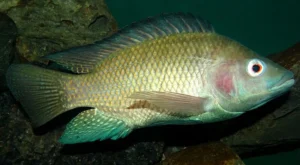The Shocking Truth About Tilapia That Will Make You Rethink Dinner Tonight!
Surprisingly, the tilapia fish, a common choice on dinner tables worldwide, hides a secret that might make seafood lovers think twice. Beneath its mild taste and low price lies a concerning fact: tilapia often contains very high levels of dioxin, a toxic chemical quietly making its way into our food supply.

Tilapia, often called the “aquatic chicken” of seafood, is a popular option in many cuisines worldwide. Its appeal comes not just from its taste but also from its affordability, making it a favorite for consumers and producers alike.
Dioxin may not be a familiar term for everyone, but it’s a group of highly toxic chemicals with a specific structure. Though it seems harmless, this structure allows dioxins to sneak into our environment and food in dangerous ways.

Health Risks Associated with Dioxin
Dioxins found in some tilapia pose serious health risks that need to be addressed. These risks, supported by scientific research, affect several areas of human health:
Cancer: Dioxins may increase the risk of cancers like lung, breast, liver, and prostate cancer. They disrupt normal cell growth, which can lead to uncontrolled cell development, a key feature of cancer.
Immune System Damage: Exposure to dioxins can weaken the immune system, leaving people more prone to infections and illnesses.
Hormonal Problems: Dioxins can upset the body’s hormonal balance, possibly leading to reproductive or developmental issues.
Liver Damage: These toxins can harm the liver, which is vital for detoxifying and processing substances in the body. Damage to this organ can have widespread health effects.
Mental Health Issues: Long-term exposure to dioxins has even been linked to psychological disorders, showing how dangerous these chemicals can be.

To make safer choices when buying fish, consumers can take simple yet effective steps:
Read Labels: Check labels carefully when buying packaged tilapia.
Research Sources: Look into where your seafood comes from. Are the producers following strict safety and quality standards?
Use Seafood Guides: Trusted guides and apps can help identify safe and sustainable seafood.
Support Sustainability: Choose seafood from sources committed to sustainable practices.
Try Other Fish: Explore a variety of seafood options to reduce risks.

